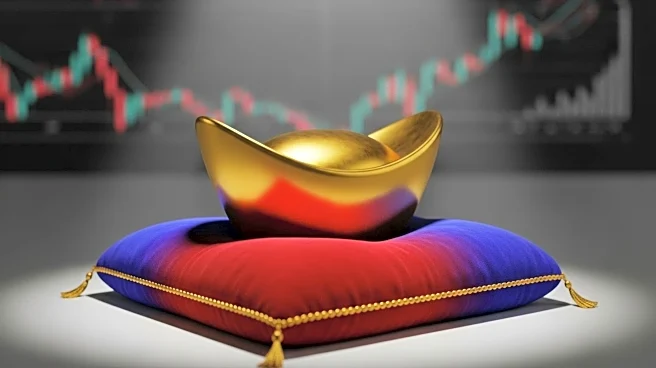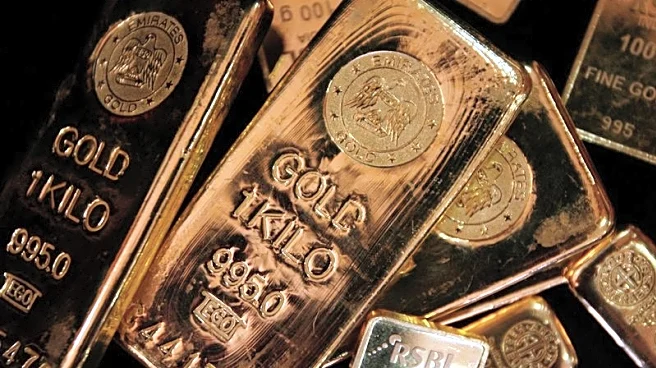What's Happening?
Gold prices have surged past $4,000 an ounce, marking a significant increase of 54% this year, the highest since 1979. This rise is occurring alongside a booming stock market, driven by investor interest in Big Tech companies and artificial intelligence. The increase in gold prices reflects investor unease about the economy and persistent inflation concerns, with inflation remaining above the Federal Reserve's 2% target for over four years. The U.S. government shutdown has further fueled this trend by disrupting major economic reports, leading investors to seek safe havens like gold. Additionally, the U.S. dollar's weakness has prompted central banks and investors to turn to gold, questioning the dollar's status as a global safe haven.
Why It's Important?
The surge in gold prices highlights growing economic uncertainty and inflation concerns, which could have significant implications for U.S. financial markets and global economic stability. As investors increasingly view gold as a safer bet than the U.S. dollar, this shift could impact the dollar's long-held status as a global reserve currency. The trend also underscores the potential for increased asset inflation and de-dollarization, which could affect international trade and investment strategies. Central banks' increased gold purchases, driven by geopolitical tensions and sanctions, further emphasize the shifting dynamics in global financial markets.
What's Next?
Goldman Sachs predicts that gold prices could reach $4,900 by the end of next year, driven by strong buying from central banks, retail investors, and anticipated rate cuts from the Federal Reserve. This forecast suggests continued volatility in financial markets and potential shifts in investment strategies. As economic uncertainty persists, investors may continue to seek safe havens, impacting currency markets and global trade. The ongoing U.S. government shutdown and geopolitical tensions could further influence gold prices and investor behavior.
Beyond the Headlines
The rise in gold prices amid economic uncertainty raises questions about the long-term implications for global financial systems and the role of traditional safe havens. As central banks diversify their reserves, the potential for de-dollarization could reshape international monetary policies and trade relations. Additionally, the interplay between gold and stock market dynamics highlights the complex factors influencing investor sentiment and market stability.











